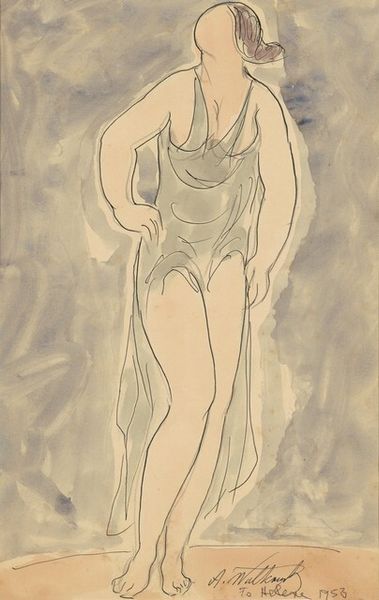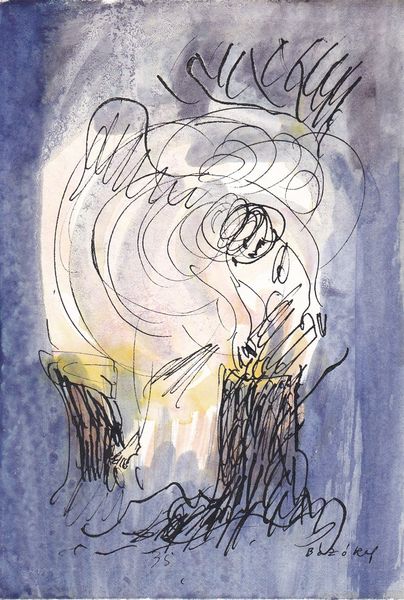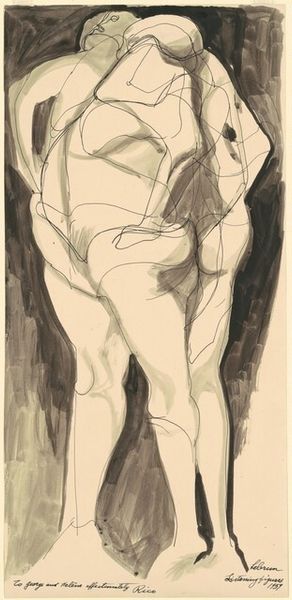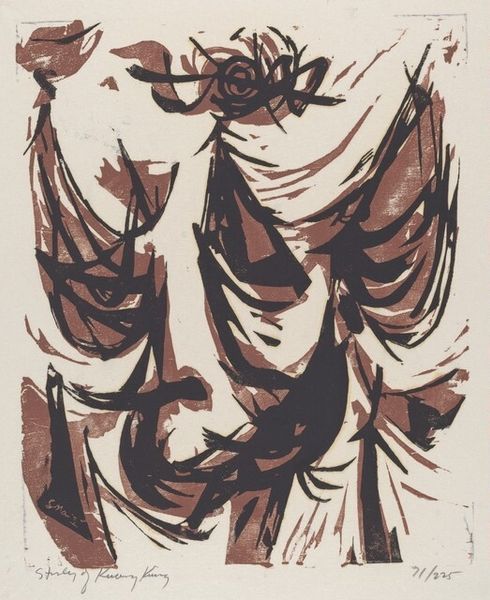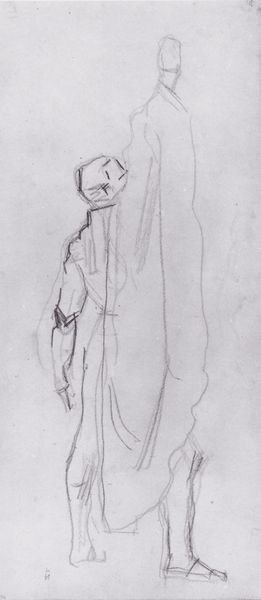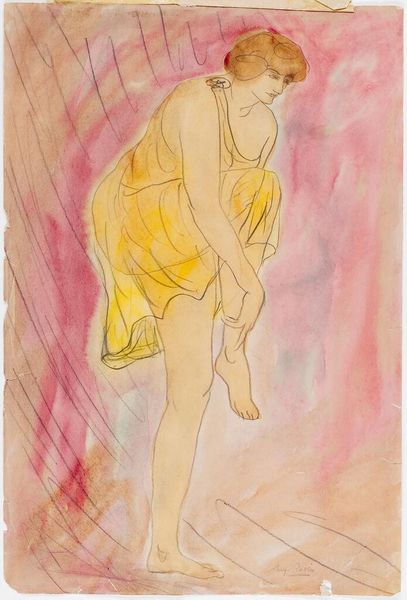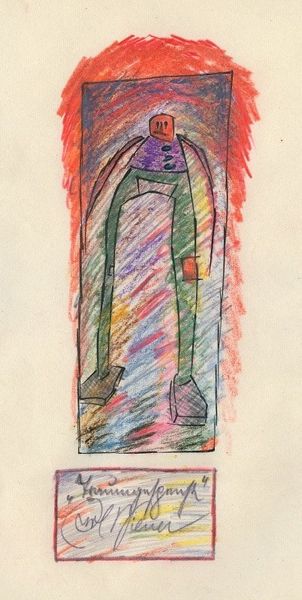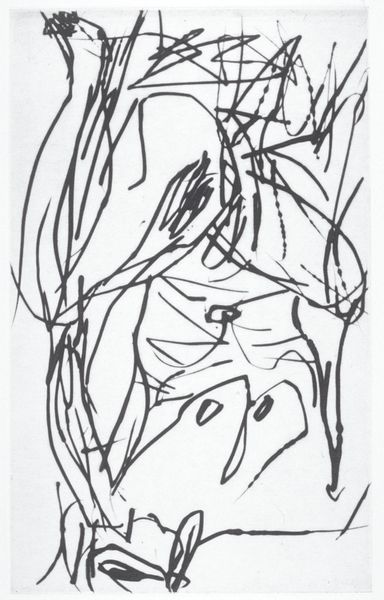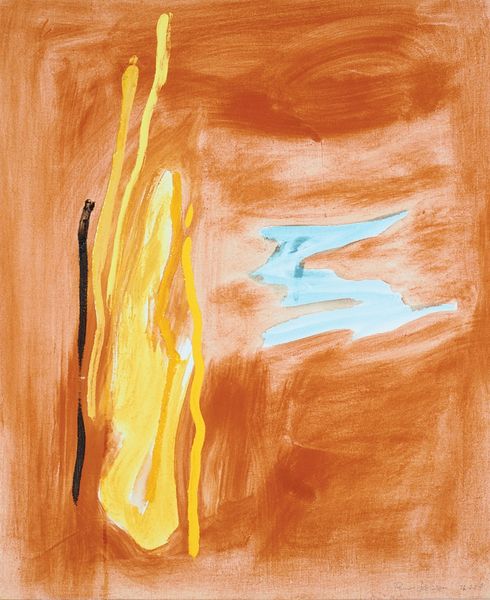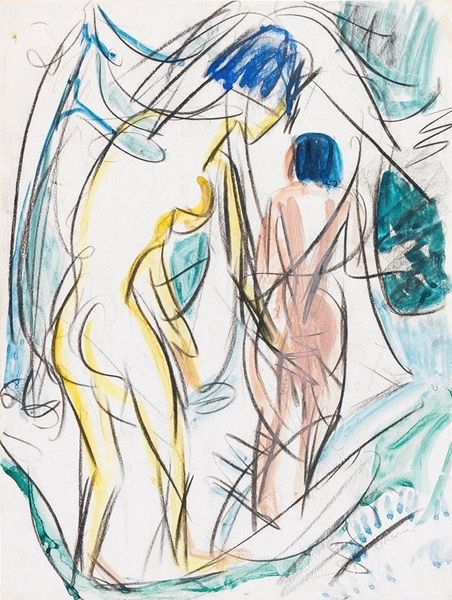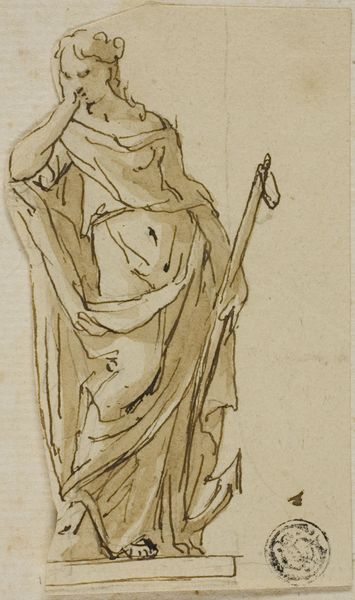
drawing, watercolor, ink
#
portrait
#
drawing
#
ink painting
#
figuration
#
watercolor
#
ink
#
watercolour illustration
#
modernism
#
watercolor
Dimensions: sheet: 26.99 × 17.46 cm (10 5/8 × 6 7/8 in.)
Copyright: National Gallery of Art: CC0 1.0
Curator: This is Abraham Walkowitz's "Isadora Duncan," likely from the 1930s, executed in watercolor and ink. It’s a delicate rendering. Editor: My initial impression is of fragility. The washes of color and the hesitant lines contribute to this ethereal feeling, almost as if the dancer is fading from view. Curator: Precisely! Notice the use of line—how Walkowitz captures the energy and movement of Duncan with such economy. It’s a testament to his understanding of form, but more importantly, the gesture communicates meaning in and of itself. It bypasses any kind of representational constraint in favor of expressive capacity. Editor: I see the expressive quality, but I'm drawn to the physical properties of the watercolor itself, how the fluidity and blendability were crucial. Walkowitz is using it not merely to depict but to evoke a sense of lightness, ephemerality. It is not just representation, it is embodied gesture. One wonders about the paper choice: was it absorbent to quickly draw-in the water and inks? Was this a mass produced sketching paper, something of little consequence other than as a surface for production? Curator: The choice of materials undoubtedly enhances the drawing's overall effect, yet focusing too narrowly on just the making seems to distract from interpreting its composition. The upward thrust of the figure, mirrored by the converging lines of the background, establishes a visual and semiotic dynamism. Isadora’s body, her dance, as a signifier… Editor: I appreciate the semiotic analysis, but without considering the tools Walkowitz had to hand – literally – we lose the materiality that is as much a part of the meaning, as is the composition. Was the artist simply recording a spectacle, or making use of material that itself implies spectacle and ephemerality in it handling? This may not be the singular, detached act of artistic genius. It speaks more to the artist being another body subject to material affordance. Curator: Perhaps both approaches are warranted, wouldn't you agree? To acknowledge the inherent qualities of the materials but to move beyond this and engage with the formal elements: line, color, composition, etc., as bearers of symbolic meaning. Editor: I suppose that blending formal readings with tangible qualities offers the richest understanding. Thank you! Curator: A stimulating conversation! I'll be sure to remember our discussion on future encounters with similar work.
Comments
No comments
Be the first to comment and join the conversation on the ultimate creative platform.
